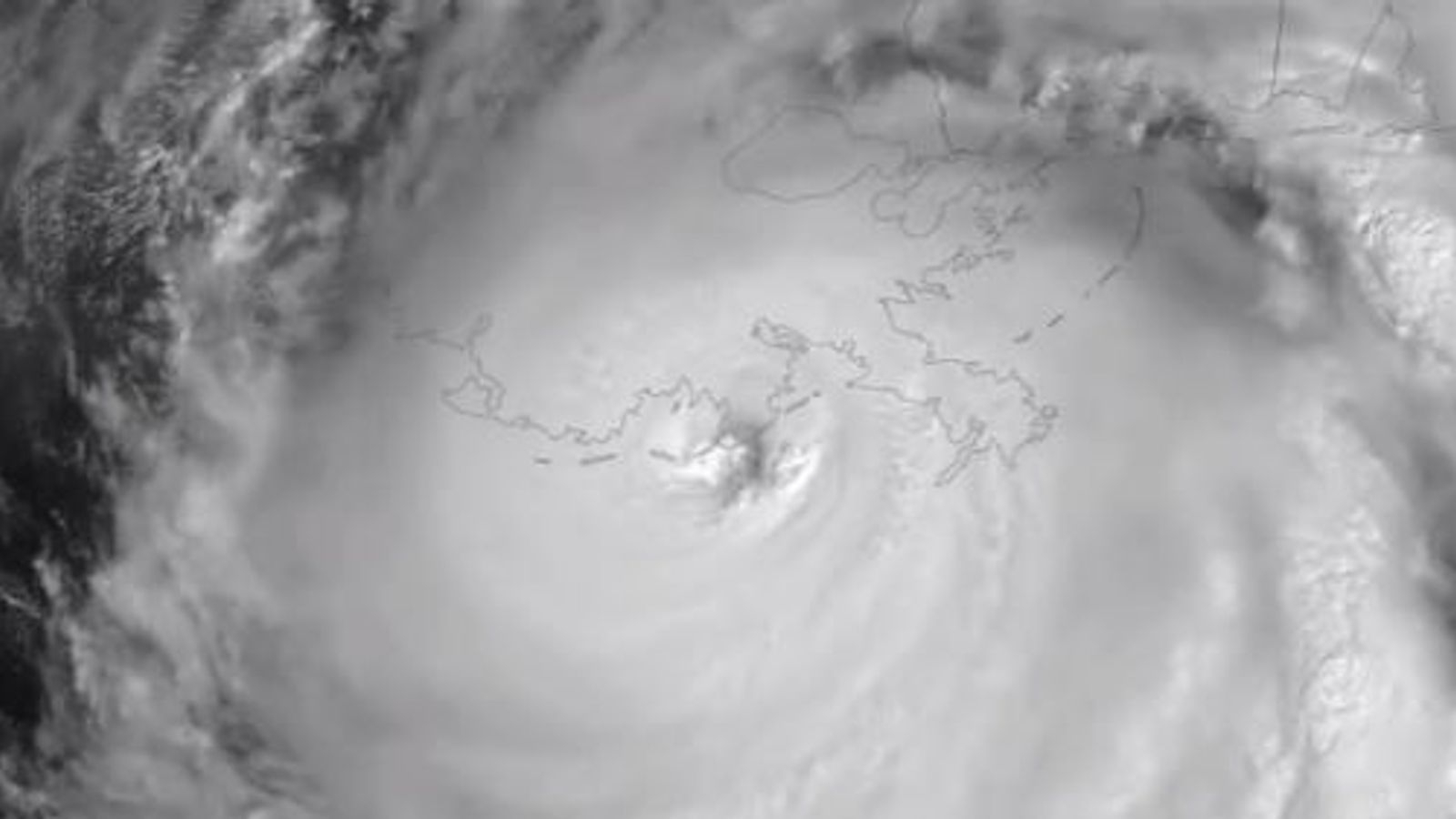Hurricane Ida has made landfall in Louisiana as an “extremely dangerous” category four storm.
It hit on the same date Hurricane Katrina ravaged Louisiana and Mississippi 16 years earlier, about 40 miles west of where category three Katrina first struck land.
Arriving with a barometric pressure of 930 millibars, Ida preliminarily goes down as tied for the fifth strongest hurricane to make landfall in the US based on wind speed.
Based on central pressure it is tied for ninth strongest US landfall.
Hurricane Ida makes landfall – follow live updates
Ida rapidly intensified overnight as it moved through some of the warmest ocean water in the world in the northern Gulf of Mexico, its top winds grew by 45mph to 150mph in five hours.
Hurricane force winds started to strike Grand Isle on Sunday morning.
Before power was lost on the Louisiana barrier island, a beachfront web camera showed the ocean steadily rising as growing waves churned and palm trees whipped.
More than 100,000 customers had lost power in Louisiana by noon and were without electricity, according to PowerOutage.US, which tracks outages nationwide.
Officials said Ida’s swift intensification from a few thunderstorms to massive hurricane over three days left no time to organise a mandatory evacuation of its 390,000 residents.
Mayor LaToya Cantrell urged residents to leave voluntarily.
Those who stayed were warned to prepare for long power outages amid sweltering heat.
In Port Fourchon, boats and helicopters gathered to take workers and supplies to oil platforms in the ocean and the oil extracted starts it journey toward refineries.
The port handles about a fifth of the nation’s domestic oil and gas, officials said.
Along with the oil industry, Ida threatened a region already reeling from a resurgence of COVID-19 infections, due to low vaccination rates and the highly contagious delta variant.
More than two million people live around New Orleans, Baton Rouge and the wetlands to the south.
New Orleans hospitals planned to ride out the storm with their beds nearly full, as similarly stressed hospitals elsewhere had little room for evacuated patients.
And shelters for those fleeing their homes carried an added risk of becoming flashpoints for new infections.
Forecasters warned winds stronger than 115mph were expected soon in Houma, a city of 33,000 that supports oil platforms in the Gulf and Gulfport, Mississippi, to the east of New Orleans was seeing the ocean rise and heavy rains bands.
President Joe Biden approved emergency declarations for Louisiana and Mississippi ahead of Ida’s arrival.
Comparisons to the 29 August 2005, landfall of Katrina weighed heavily on residents bracing for Ida.
“Ida will most definitely be stronger than Katrina, and by a pretty big margin,”‘ said University of Miami hurricane researcher Brian McNoldy.
“And, the worst of the storm will pass over New Orleans and Baton Rouge, which got the weaker side of Katrina.”



